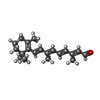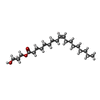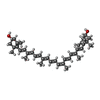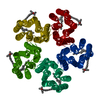+Search query
-Structure paper
| Title | Phototrophy by antenna-containing rhodopsin pumps in aquatic environments. |
|---|---|
| Journal, issue, pages | Nature, Vol. 615, Issue 7952, Page 535-540, Year 2023 |
| Publish date | Mar 1, 2023 |
 Authors Authors | Ariel Chazan / Ishita Das / Takayoshi Fujiwara / Shunya Murakoshi / Andrey Rozenberg / Ana Molina-Márquez / Fumiya K Sano / Tatsuki Tanaka / Patricia Gómez-Villegas / Shirley Larom / Alina Pushkarev / Partha Malakar / Masumi Hasegawa / Yuya Tsukamoto / Tomohiro Ishizuka / Masae Konno / Takashi Nagata / Yosuke Mizuno / Kota Katayama / Rei Abe-Yoshizumi / Sanford Ruhman / Keiichi Inoue / Hideki Kandori / Rosa León / Wataru Shihoya / Susumu Yoshizawa / Mordechai Sheves / Osamu Nureki / Oded Béjà /     |
| PubMed Abstract | Energy transfer from light-harvesting ketocarotenoids to the light-driven proton pump xanthorhodopsins has been previously demonstrated in two unique cases: an extreme halophilic bacterium and a ...Energy transfer from light-harvesting ketocarotenoids to the light-driven proton pump xanthorhodopsins has been previously demonstrated in two unique cases: an extreme halophilic bacterium and a terrestrial cyanobacterium. Attempts to find carotenoids that bind and transfer energy to abundant rhodopsin proton pumps from marine photoheterotrophs have thus far failed. Here we detected light energy transfer from the widespread hydroxylated carotenoids zeaxanthin and lutein to the retinal moiety of xanthorhodopsins and proteorhodopsins using functional metagenomics combined with chromophore extraction from the environment. The light-harvesting carotenoids transfer up to 42% of the harvested energy in the violet- or blue-light range to the green-light absorbing retinal chromophore. Our data suggest that these antennas may have a substantial effect on rhodopsin phototrophy in the world's lakes, seas and oceans. However, the functional implications of our findings are yet to be discovered. |
 External links External links |  Nature / Nature /  PubMed:36859551 PubMed:36859551 |
| Methods | EM (single particle) / X-ray diffraction |
| Resolution | 2.3 - 3 Å |
| Structure data | EMDB-35143, PDB-8i2z:  PDB-7ytb: |
| Chemicals |  ChemComp-RET:  ChemComp-OLC:  ChemComp-HOH:  ChemComp-K3I: |
| Source |
|
 Keywords Keywords | MEMBRANE PROTEIN / rhodopsin / inward proton pump / PROTON TRANSPORT / Cryo-EM / anntena |
 Movie
Movie Controller
Controller Structure viewers
Structure viewers About Yorodumi Papers
About Yorodumi Papers





 uncultured bdellovibrionales bacterium (environmental samples)
uncultured bdellovibrionales bacterium (environmental samples)